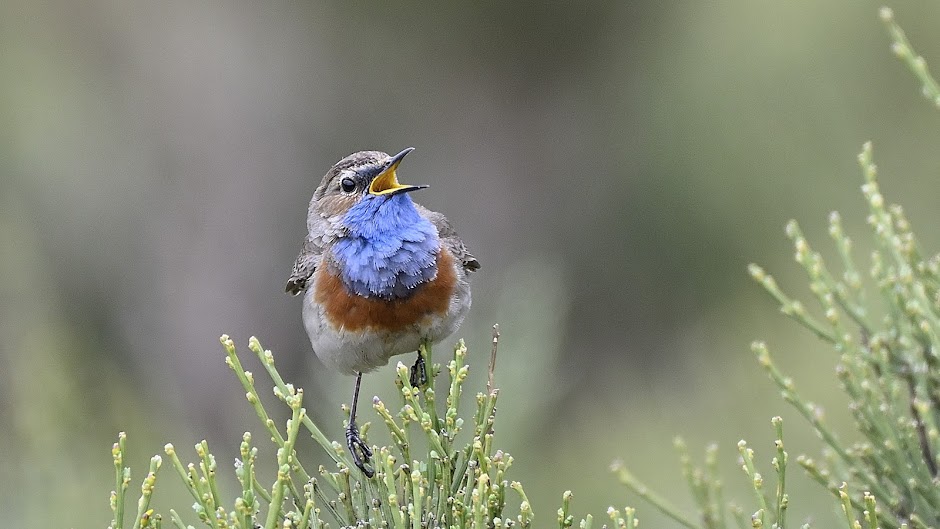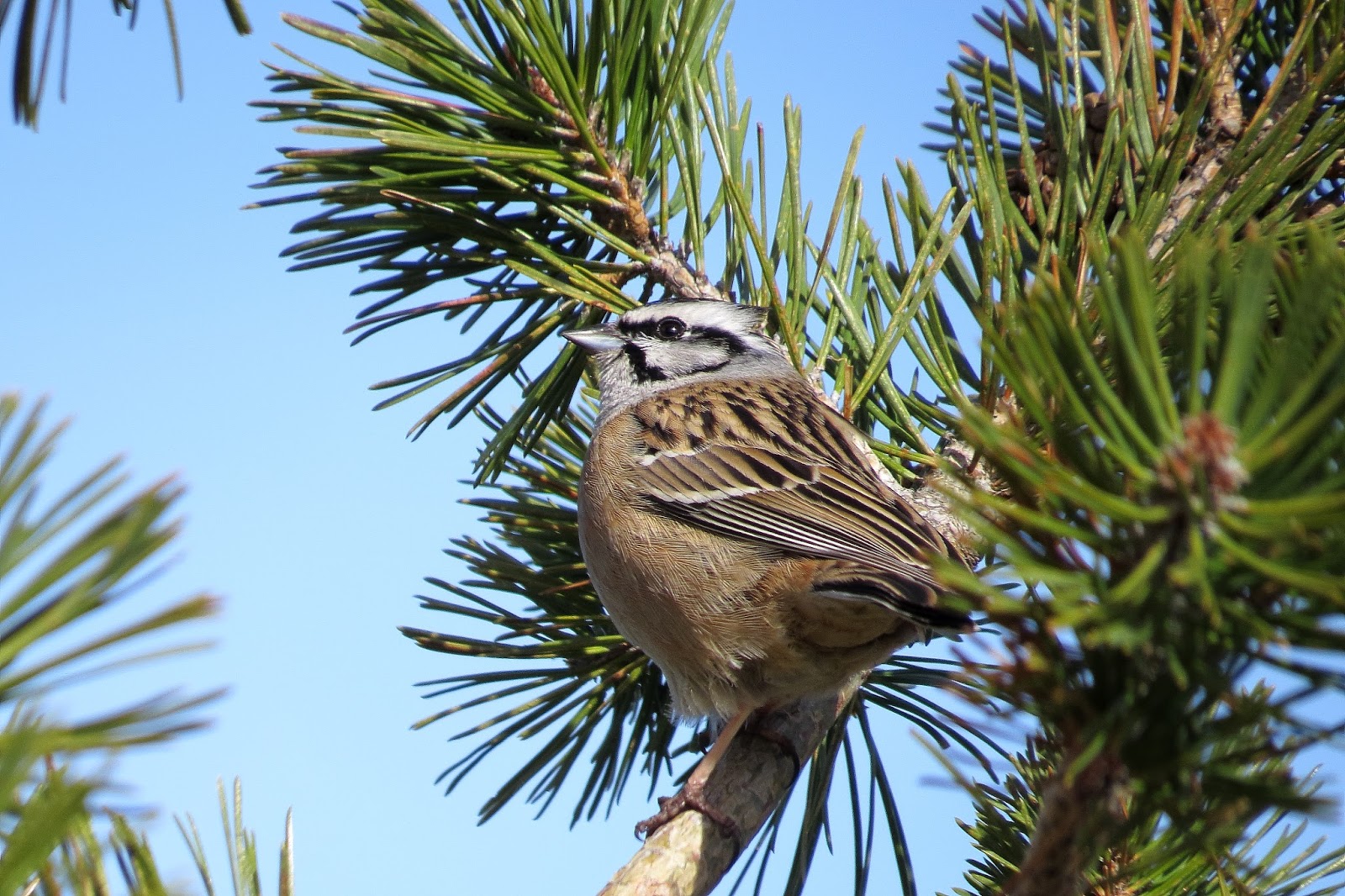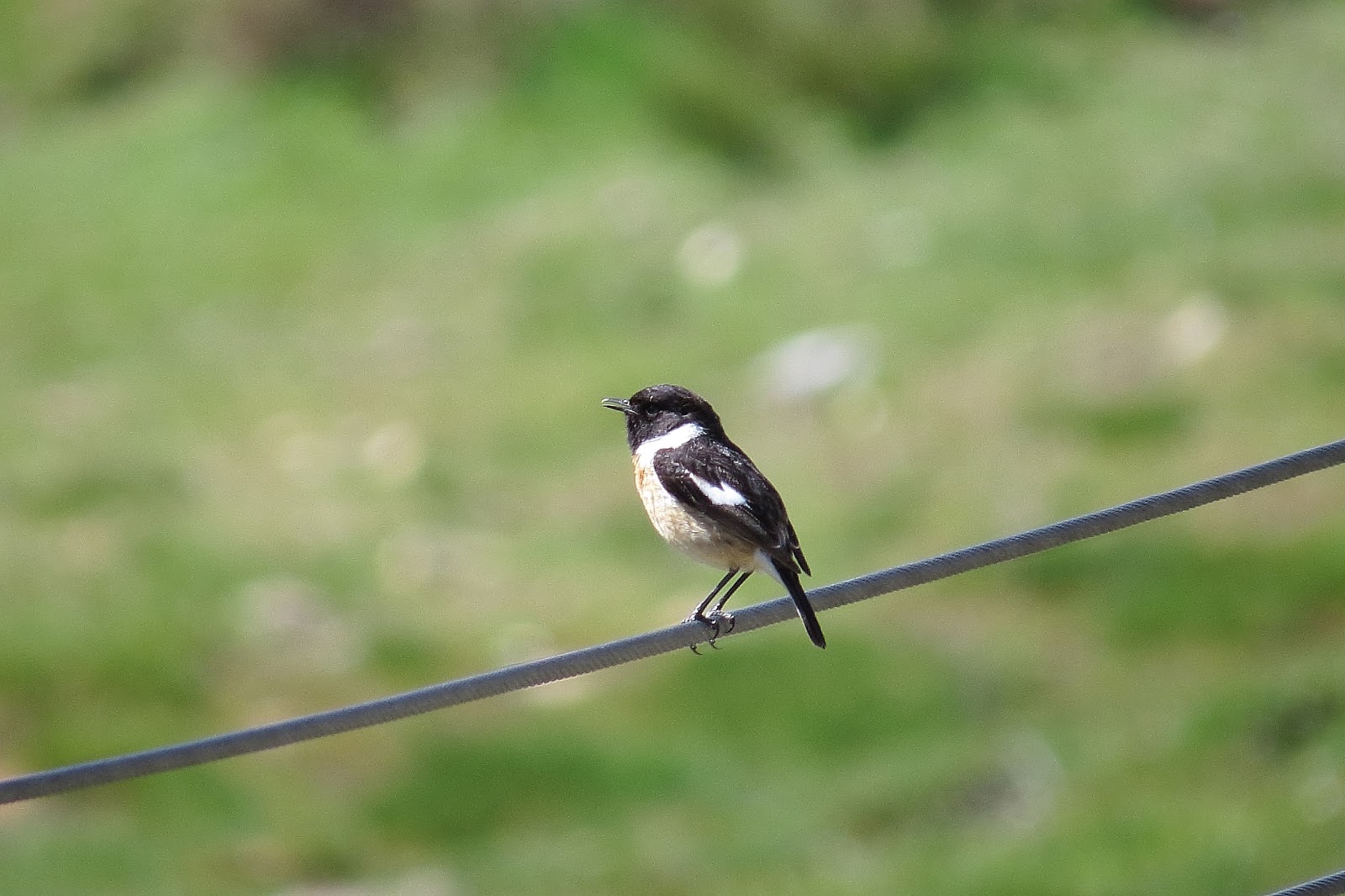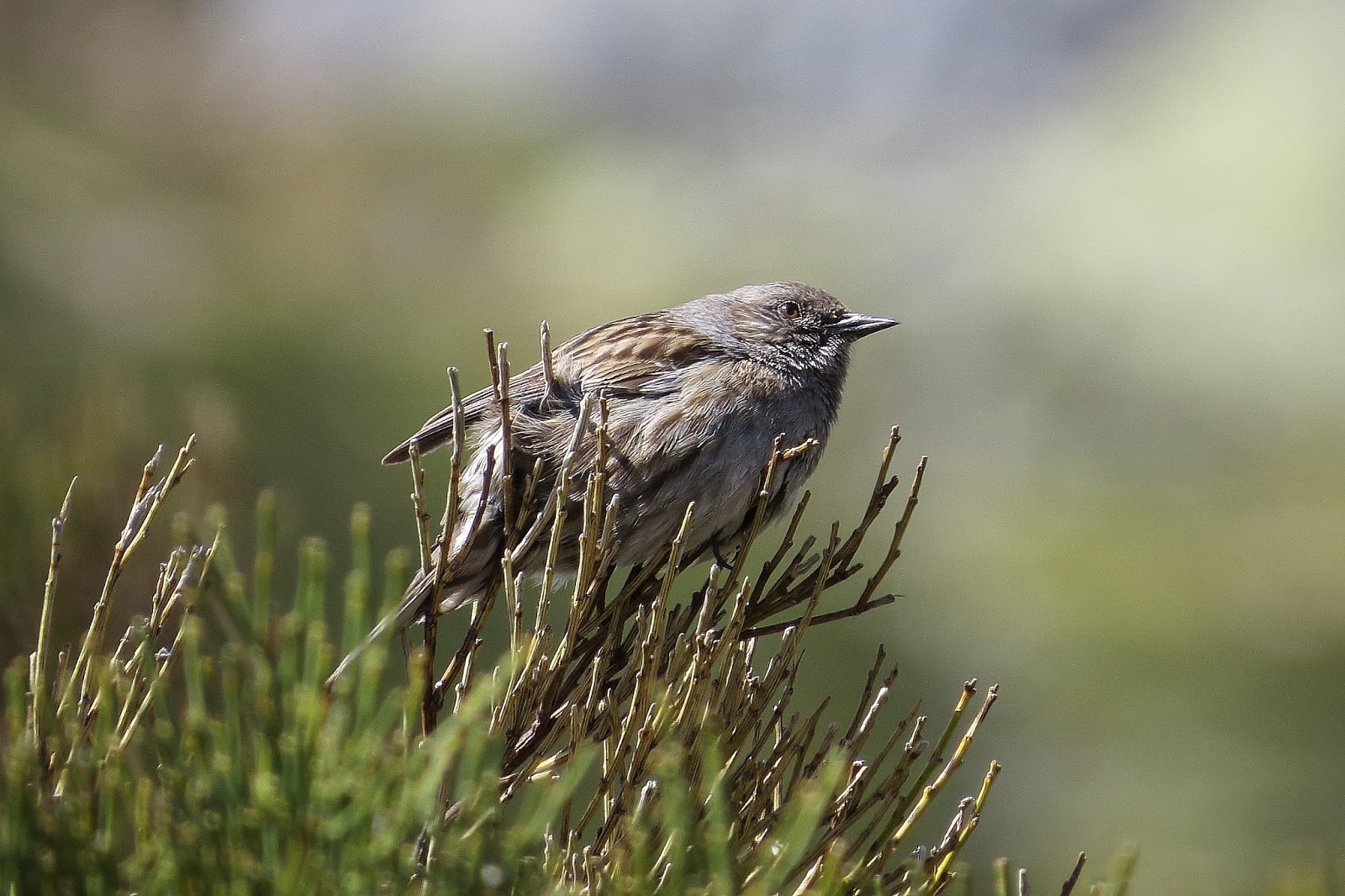Hola otra vez.
Hello again.
Este Parque Nacional es de reciente creación, concretamente del 27 de junio de 2013. Consta de una superficie de 30.000 hectáreas lo que le convierte en el cuarto más extenso de España y se encuentra a caballo entre las provincias de Madrid y Segovia. En él convergen 11 ecosistemas diferentes destacando el de alta montaña.
This National Park has been recently established, June 27, 2013 . It has an area of 30,000 hectares which makes it the fourth largest in Spain and is located between the Provinces of Madrid and Segovia. In it 11 different ecosystems converge highlighting the high mountains.
Con un día estupendo y Antes de subir al puerto de Guadarrama decidimos pasarnos por el Embalse de Santillana a ver si podíamos ver a los tarros canelos (Tadorna
ferruginea) que se encuentran asilvestrados en este embalse y sus alrededores. Por desgracia no tuvimos esa suerte.
With a great day and before going to the Guadarrama Pass we decided to stop at the Embalse de Santillana to see if we could find the Ruddy Shelducks that have established as a feral specie in this reservoir and its surroundings. Unfortunately we had no such luck.
Lo primero que vimos nada más bajar de la furgoneta fue este gorrión molinero (Passer
montanus).
The first thing we saw getting off the van was this Tree Sparrow.
En su lugar vimos a esta otra ave invasora, un ganso del Nilo (Alopochen aegyptiacus) que estaba con un ánsar común (Anser anser) que se fue enseguida volando.
Instead we saw this other invasive bird, a Egyptian Goose that was with a greylag goose but it fly away very soon.
Ya en la Sierra nuestro primer destino fue el puerto de Guadarrama. Vimos algunos escribanos montesinos (Emberiza
cia) en su mayoría machos.
Already in the Sierra our first destination was the Pass of Guadarrama. We saw some Rock Buntings majority males.
Que aves tan bonitas, ¿no es cierto?
Beautiful birds, aren't they?
Y también había bastantes cuervos (Corvus
corax).
And there were quite a few Common Ravens.
Este hermoso ejemplar de Alcotán europeo (Falco
subbuteo) nos entretuvo un buen rato. Era el primero que veía en este temporada.
This beautiful specimen of Hobby entertained us a for a while. It was the first I had seen in this season.
Y también disfrutamos de la presencia de varios verderones serranos (Serinus
citrinella). Este es un macho.
And also enjoyed the presence of several Citril
Finch. This is a male.
Por el cielo sobrevolaba esta águila calzada (Aquila
pennata) morfo clara. También vimos un abejero europeo (Pernis
apivorus) pero me fue imposible fotografiarlo.
By sky was overflying this Booted Eeagle white fase. Also we saw a Honey Buzzard but I couldn't photograph it.
Vimos muchos carboneros garrapinos (Periparus
ater).
We saw lots of Coal Tits.
Y varios acentores comunes (Prunella
modularis).
And several Dunnocks.
Macho de tarabilla europea (Saxicola rubicola).
Common
Stonechat male.
Estos narcisos silvestres (Narcissus assoanus) captaron mi atención.
These wild narcissuses caught my eye.
Luego decidimos ir hasta la Laguna Grande de Peñalara y antes de comenzar la subida vimos estos buitres negros (Aegypius
monachus).
Then we decided to go to the Laguna Grande de Penalara and before starting the climb we saw these Monk Vultures.
Y algunos buitres leonados (Gyps
fulvus).
And some Griffon Vultures.
Comimos algo en la Laguna Grande y unos acentores comunes (Prunella modularis) se acercaron a ver si podían comer algunas migajas que, evidentemente, no les dimos.
We ate something in the Laguna Grande and some Dunnocks approached to see if they could eat some crumbs that obviously did not give them.
En algunas zonas había muchos narcisos silvestres.
In some areas there were many wild narcissuses.
El circo glaciar de Peñalara no deja de sorprenderme.
The glacial cirque of Penalara never ceases to amaze me.
También disfrutamos de varias parejas de collalbas grises (Oenanthe
oenanthe). En la foto un macho.
We also enjoyed several pairs of Northern Wheatear. Pictured a male.
Y esta una hembra.
And this a female.
Cuando ya nos disponíamos a regresar salio de unas rocas muy cercanas este bello macho de roquero rojo (Monticola
saxatilis). Toda una sorpresa.
When we already starting coming back it got out from a nearby rocks this beautiful male of Rock Thrush. Quite a surprise.
Que pena que se poso muy lejos nuestro.
Pity it landed far our.
Un macho de tarabilla europea (Saxicola rubicola).
Common Stonechat male.
En el aparcamiento vimos varios cuervos (Corvus corax).
In the car park we saw several Common Ravens.
Y algunos verdecillos (Serinus
serinus). También algunos verderones serranos (Serinus citrinella) pero no les pude fotografiar.
And some European Serins. Also some Citril Finches but I could not photograph them.
De vuelta decidimos pasar por el bonito Puerto de la Morcuera. Había bastantes arrendajos (Garrulus
glandarius).
We decided to came back through the beautiful Puerto de la Morcuera. There were quite a few Eurasian Jays.
Y algunas totovías (Lullula
arborea).
And some Wood Larks.
Otros narcisos silvestres (Narcissus bulbucodium).
Other wild narcissuses.
Y un grupo de machos jóvenes y hembras de cabra montés (Capra pyrenaica).
And a group of young males and femalse of Spanish Ibex.
Y con esta bonita vista me despido de vosotros hasta la siguiente entrada.
And with this beautiful view I say you bye until the next post.










































No hay comentarios:
Publicar un comentario